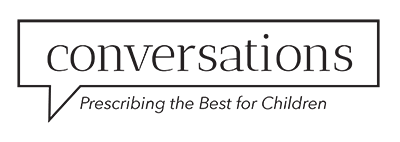Adolescent Risk Taking
Adolescence is a time of rapid brain growth with hormonal changes that encourage risk taking. As pediatricians, we can encourage healthy risk taking that will allow adolescents to explore adult roles and responsibilities, while encouraging creativity and family bonding. Unhealthy risk taking should obviously be discouraged.
BACKGROUND
PROMOTING STRONG, STABLE FAMILIES
- The nuclear family is the most important unit of a stable society and, as such, deserves support.
- Adolescents need parental (mother and father) support and supervision to successfully navigate the teen years.
- Parents need encouragement to counter societal trends that work to separate adolescents from their families.
- Adolescents do have the capacity to say “no.”
SCIENTIFIC RESEARCH

The risk-taking/reward centers of the brain involve dopamine pathways in the limbic area, which is poorly connected to the immature frontal lobe. This creates an environment for poor decision making and increased risk taking. People can be divided into low-risk takers and high-risk takers, possibly due to rearing or genetic influence.

Low-risk takers can become high-risk takers when drugs such as alcohol increase the levels of dopamine. Negative and/or high-risk behaviors of teens are all interconnected. Early sexual experience, for example, is associated with other behaviors that endanger health: alcohol, marijuana/other drugs, smoking, and violent behavior.

Similarly, adolescents who avoid one risk-taking behavior are often protected from other negative experiences.
THE CONVERSATION
This conversation depends on the maturity of the child but usually happens as the child enters the teen years.
This conversation involves the growing adolescent.
Ask the child: Did you know there is something very special happening in your brain at this time in your life?
What new activities would you like to try?
What would make the activity exciting or interesting? What would be frightening or dangerous about the activity? Is this an activity that would help you and your brain grow properly? Is this activity a possibility for you? Have you talked with your parents about this?
So, you would like to be a personal trainer? Have you ever spent time in a gym? Have you ever helped a friend with an exercise program? What do you think you need to do to become a personal trainer? Will you need special schooling? Will you need to know how to keep records of sales and to pay taxes? How can you be learning some of those skills right now?
Help the teen develop specific, concrete plans to obtain the goal.
- Friends (bad influence, cutting classes)
- Tobacco/marijuana
- Alcohol/other drugs
- Sex/sexually transmitted infections
- Not completing high school
Help the child answer these questions honestly and encourage them to share their answers with their parents if they feel comfortable.
RESOURCES
